Late December 1570
Shizuko was bored and had too much free time on her hands.
There was nothing else she could do besides waiting, and her suggestions were rejected by Nobunaga, who continued to assign her to post-war processing.
The influential people who used to visit and bother Shizuko during busy times were nowhere to be seen.
Kimyomaru (Oda Nobutada) was with Nobunaga in the siege of Mt.
Hiei, Nagayoshi was defending Ogie Castle with Ashimitsu, and the elusive Nohime was nowhere to be found.
Shizuko sought assistance from Keiji and Saizo in dealing with the war dead and wounded.
First, she erected memorial monuments and requested memorial services at the temples for the fallen soldiers.
The number of war dead in this campaign exceeded a thousand, including former slaves and ex-convicts.
However, Shizuko paid the same amount of rice for everyone and requested the same memorial service.
This alone surprised those around her, but she disregarded their astonishment and declared, “When anyone dies, they become a Buddha.
Therefore, there is no need to consider worldly sins or status,” further shocking them.
For the wounded, she gathered doctors and established a temporary clinic, arranging for treatment and sending letters of sympathy.
Dealing with the families of the war dead required a large-scale plan.
While providing one-time payments such as condolence money could provide immediate support, it was evident that they would eventually face hardship without a source of income.
Remarriage would be ideal, but if they became widows (women who did not remarry after the death of their husbands), it was inevitable that they would fall into poverty.
Shizuko pondered if there was a good solution and came up with the idea of building a spinning factory and employing the widows as female workers.
As the name suggests, spinning is the process of turning materials such as cotton, hemp, silk, and wool into thread.
Initially, spinning was done in a small building, but it has now developed into a factory of the same size as Heijo.
If a factory is built on a vast land, it would require many employees.
Those involved in spinning operations, those supporting the operations, those preventing the spread of diseases such as hospitals and isolation wards, nurseries for taking care of infants and children, and temple schools for educating the next generation, as well as guards to protect the factory, are all necessary.
Various employment opportunities arise from a single factory, but there are still problems.
One of the biggest problems is the outbreak of infectious diseases.
If highly contagious diseases spread, the entire area, including the factory, would become a city of death.
In the Sengoku period where there were no antibiotics or treatments, epidemic prevention was a matter of life and death.
To prevent the spread of diseases, the quickest way is to enhance natural healing power and immunity.
To enhance these, various factors such as clothing, food, shelter, public health, and law and order need to be considered.
“Fortunately, most of them have remarried… but there are still some who become widows.
We need to increase the number of safety harnesses.”
Safety harnesses, or more precisely, baby harnesses, are tools used to prevent toddlers who can walk from wandering away from their parents.
It originated in medieval Europe, where it was a string attached to clothing to assist toddlers in walking.
Over time, its role changed, and it took on the form it has today.
In Europe, it has a history of several hundred years and was popular mainly among the upper nobility.
It even appeared in portraits depicting Louis XIV and his family in their later years.
Of course, there were criticisms even back then, but due to the high risk of even minor accidents leading to death, many nobles used them to protect their children.
“Well, it’s not well-received by the older generation.
I used my power to promote its use after a long time.”
In Europe and Japan, in both the Sengoku period and the present day, children still engage in unpredictable behavior.
Shizuko had heard stories of a child trying to help their mother who had fallen, only for another child to let go of their mother’s hand and jump into a river, resulting in drowning.
No matter how many nurseries are established, the danger does not disappear.
To reduce the mortality rate of children who will carry on the next generation, the widespread use of safety harnesses was essential.
However, opposition also arose in Japan, just like in Europe.
Ideally, it would have been gradually introduced, but due to the urgency of saving lives, widespread adoption was necessary.
Therefore, Shizuko exercised her rarely used power and instructed mothers to use safety harnesses, avoiding foreign terms and calling them “迷子紐” (meigohimo), and imposed penalties on parents who were not using them through surprise inspections.
“Well, I’ll leave the production of safety harnesses to others.
Now, I need to compile the report on aerial cultivation.”
Shizuko needed to compile the results of the experiment on aerial cultivation of sweet potatoes and submit it to Nobunaga.
The aerial cultivation of sweet potatoes was successful, but the size was still slightly smaller than those grown in soil.
However, it was discovered that the size of sweet potatoes peaked at four months and did not significantly grow even with more time.
Based on this, it was believed that two crops could be grown from April to August and from July to November.
In the first period, potatoes, stems, and leaves could be harvested, and in the second period, potatoes and stems could be harvested.
By having two crops, even if the potatoes were slightly smaller, the overall harvest would increase.
In fact, by cultivating them in a triangular shelf with a total area of one square meter, a yield of 20 kilograms per square meter was achieved.
With two crops, a simple calculation would yield an expected yield of 40 kilograms per square meter.
“The problem is the surplus of sweet potatoes produced for the experiment.”
Shizuko complained while eating sweet potato chips.
They were originally grown in a certain amount as emergency food, and additional sweet potatoes were cultivated for the experiment.
Naturally, the harvest was higher than usual.
However, since the consumption of sweet potatoes remained the same, they were consumed as snacks, such as sweet potato chips.
“Well, the report will be completed soon.
But today is one of the rare days I go out, so I need to prepare.”
Nobunaga had imposed strict travel restrictions on Shizuko, but after one month, the restrictions were relaxed.
This was because there were important matters that she had to attend to.
One of them was receiving the horses.
These were not the horses native to Japan, such as the Kiso horse, but rather the Arabian breed, which was the first improved breed to be established among the existing breeds overseas.
The famous Thoroughbred breed, which was also a result of crossing the Arabian breed with the native Hunter breed in England.
With a height of about 150 cm and a weight of about 400 kg, the Arabian breed excelled in weather resistance and durability, and above all, they were fast horses.
They were horses suitable for running on flat land, with great stamina to cover long distances.
On the other hand, they required a large amount of food and were weak to changes in elevation, unlike the Kiso horse.
They couldn’t reach their full potential with rough food.
In Japan, where 60% of the land is mountainous, it was difficult to find a use for them.
However, by crossing them with the Kiso horse, it was possible to obtain a horse with the same strength against changes in elevation, robustness, and ability to withstand rough food, similar to the Anglo-Arab breed.
After disguising herself in men’s clothing for the meeting with Frois, Shizuko received a total of 50 horses, 30 males and 20 females.
She selected the best individual from the horses and equipped it with horse gear.
Knowing that Nobunaga would definitely demand one horse if he saw them, she claimed the best individual for herself before that happened.
“It’s a good horse.”
“I’m glad you like it.”
Frois, who was riding a Kiso horse, smiled and spoke.
It was largely thanks to him that they were able to import the Arabian breed to Japan.
Of course, it was not a selfless service.
It was a result of mutual interests aligning.
By 1500, Europe had already been importing Arabian horses, so it was possible to send around 50 of those horses to Japan.
However, the Arabian breed had strong ties to Western military affairs, and initially, even the Jesuits showed reluctance.
Considering the Turkish Angora incident in Japan, the Jesuits wondered if they could substitute cats.
Medieval Europe can be considered a dark age for cats.
They were considered familiars of witches, especially black cats, and many cats were burned at the stake for crimes they did not commit.
The reason cats were seen as symbols of evil began with the condemnation by the Gnostic sect of Christianity, accusing them of being “demons disguised as black cats.” This led to the persecution of black cats, which became further associated with the witch hunts and the hunting of heretics, resulting in cats being considered familiars of witches.
As the number of cats decreased, the number of rats increased, and with it, the fleas carrying the plague bacteria spread.
As a result, the Black Death spread throughout medieval Europe.
People who believed that this was the work of the devil proceeded to massacre even more cats.
However, this only led to an increase in rats carrying the plague, further facilitating the spread of the epidemic.
On the other hand, in Japan and Egypt, cats have long been valued as mystical creatures.
Cats that preyed on rats that damaged stored grains were valuable partners.
In ancient Egypt, cats were highly revered, and when a pet cat died, the owner would mourn and mummify the cat, placing it in a coffin with great respect.
In Japan, black cats were called “fukuneko” (lucky cats) and were highly cherished.
Among them, the Tang Dynasty black cat mentioned in Emperor Uda’s diary, “Kanpyo Goki,” was particularly famous.
Emperor Ichijo, who appears in “The Pillow Book,” also loved cats.
When a kitten was born, a ceremony similar to that of a human was performed, and it was given the name “Inochi no Omoto” (Source of Life) and awarded the fifth rank.
The Jesuits, who were unaware of this historical background, sent many wildcats to Japan along with a letter, instructing Frois to somehow deceive them with cats.
However, Frois rejected the Jesuits’ request, arguing that their ungrateful attitude was the most disliked in this country and convinced them to send Arabian horses instead.
In the end, the Jesuits accepted the persuasion and decided to send 50 Arabian horses to Japan, which were not castrated.
Meanwhile, Frois used the Manul cat and an unusually large white cat that had been sent to him and presented them to Shizuko as an apology for the delayed horse transport.
Upon learning that the mountain cats were forcibly captured, Shizuko told Frois, “There is no need to present animals to someone like that.
We will accept them this time, but from now on, we should refrain from reckless overhunting.” She was concerned about the disruption of Japan’s ecosystem, but unfortunately, Frois only understood that her statement was related to Buddhist teachings.
(But well, I initially thought they would die from illness, but wild animals have surprisingly strong vitality.)
The Pallas’s cat is a mountain cat that inhabits high-altitude areas with few bacteria.
Shizuko believed that they would not be able to withstand drastic environmental changes and would likely die from illness.
However, during the journey on the ship, the Pallas’s cat seemed to have become stronger, or perhaps it was the strongest among the many individuals that survived.
In any case, the Pallas’s cat was lively and active.
Being nocturnal, it hunted nocturnal rodents without hesitation.
Although it is relatively small for a mountain cat, its only rivals in hunting rodents are the Japanese river otter and it does not have to worry about being targeted by larger carnivores.
However, it did not defy the Gray Wolf family led by Wittman or the king of raptors, the White-tailed Eagle, and the nocturnal raptors, the Red-tailed Hawk and the Black-tailed Gull.
The unusually large white cat was of an unknown species.
Shizuko was not knowledgeable enough about animals to determine their species based solely on their spotted pattern.
In the modern era, there was no consideration for animal protection, and endangered species were captured without hesitation.
Considering this, the white cat could also be a valuable animal, but currently there was no way to determine its value other than letting it grow.
The only things known at the moment were that they were a pair of male and female cats and that they had been taken from separate nests.
The Pallas’s cat was wary and not easily approachable.
However, although the large white cat initially remained cautious, once it recognized Shizuko as the provider of food, its wariness diminished and it would sometimes follow behind her.
Of course, this also depended on the cats’ moods, as they had the typical capriciousness of cats.
Since the large white cat’s species was unknown, Shizuko decided not to give it a name.
However, due to its round appearance, she named the Pallas’s cat “Maruta” (meaning log).
(I have a bad feeling about the white cat.
Well, let’s not think about it too much.
Instead, since they are importing animals for me, maybe I should request a dodo bird, even though it’s extinct.)
Although Shizuko had been given a budget for cats due to Nobunaga’s fondness for them, she did not think it was desirable for more animals to be added.
However, if it was an extinct animal, it would be a different story.
The dodo bird was a flightless bird that was destroyed within a mere 100 years of its discovery.
It was officially reported to exist in 1598, and there have been no sightings since 1681, leading to its extinction.
Shizuko thought it wouldn’t hurt to ask if there was an opportunity.
“(By the way, I wonder what happened to the large escaped raptor.
Lord Frois, do you happen to know where the large bird that was said to have escaped went?)”
“The large bird… Ah, you mean that bird.
I have heard rumors that sailors saw it flying away from Japan with its companions, but there is no confirmation.”
When Shizuko casually asked Frois, she received an unexpected answer.
She felt a slight unease about the escaped raptor bringing its companions, but she decided not to worry too much about it for now.
“Oh, that’s terrifying.
Well, there’s no use worrying about it now.
There’s something more important.
Lord Frois, during the transportation of the horses, did you keep your promise with someone?”
“Yes.
We used 300 sailors to transport the horses.
However, not a single one of them fell ill with the bloody cough.”
What Shizuko traded with Frois was a treatment method for scurvy.
To prove to them that sprout cultivation was effective, she had to prove two things: that they did not get scurvy and that people who had scurvy could be cured.
The first was proven when transporting pepper seedlings and seeds.
To prove that scurvy could be prevented by consuming sprouts, they needed to have horses transported from India to Japan for more than three months.
In reality, it took about six months to transport Arabian horses, but during this time, none of the sailors contracted scurvy, proving the effectiveness of consuming sprouts.
Shizuko had concerns about the accelerating colonial policy, but the missionaries like Frois considered this treatment method as a secret ritual of the Catholic Church.
They had to regain the authority of the church above all else.
They believed that a method to treat the unknown cause of scurvy would be a means to revive the authority of the Catholic Church.
“The bloody cough, you say? I call it scurvy.”
“Scurvy, you say?”
“Bleeding from the gums, followed by bleeding from the skin, accompanied by increasing weakness and dull pain, eventually leading to death.
The cause is a lack of vegetables that cannot be replenished during a life at sea.
In the neighboring country of Ming, they have been aware of ‘this method’ for a long time.”
“I see, so that’s what you mean by ‘scurvy’.”
“Yes.
But now there is no reason to fear scurvy.”
“Yes, you’re right… With this…”
Frois felt a sense of accomplishment in regaining the authority of the Catholic Church.
In mid-November, a group of rebels led by the dispatched monks from Honganji Temple, led by Yoritada Shimoma, had increased their forces to tens of thousands.
Some of the castle lords and powerful clans in the northern Ise region, known as the “Northern Ise Forty-Eight Families,” had joined the Nagashima Ikko-ikki, steadily turning against the Oda clan.
After capturing Nagashima Castle, which was ruled by the Ito clan, they made it the base of the Nagashima Ikko-ikki.
They then aimed to capture Ogie Castle, guarded by Nobuyuki, but what awaited them was the word “despair.”
Ogie Castle had become a solid fortress with the latest construction techniques, such as concrete walls.
It was easily known that it couldn’t be captured simply by brute force.
Furthermore, the walls were designed to prevent brute force attacks.
When the approaching soldiers suddenly fell and did not get up, one would suspect poison gas or biological and chemical weapons, but such weapons had not been developed in the Sengoku period.
The Nagashima Ikko-ikki only knew that people suddenly fell.
The sight of people, regardless of age or gender, dying caused a significant decrease in the morale of the remaining Ikko-ikki.
Although the Ikko-ikki had withdrawn without achieving significant results during the daytime, they couldn’t let the weakened enemy go unnoticed.
They launched guerrilla attacks during the night when the enemy was resting and conducted thorough harassment.
They sniped at patrolling soldiers with crossbows to injure them.
They set off firecrackers to disrupt sleep.
They set traps where the enemy was likely to pass.
They caused small fires in various places, creating disturbances every night under Nagayoshi’s leadership.
From morning to evening, Ashimitsu took the lead, and from night to late night, Nagayoshi took the lead in dealing with the Nagashima Ikko-ikki.
Their strategies included both straightforward methods and dishonorable tactics that would be criticized as cowardly, but their common goal was to thoroughly strike the enemy.
They were prepared to destroy anyone who was part of the Ikko-ikki, regardless of age or gender.
While surrounding Ogie Castle, the Nagashima Ikko-ikki sent some troops to Kuwana Castle and forced the castle lord, Kazumasu Takigawa, to flee.
After capturing the surrounding castles one by one and isolating them, Yoritada Shimoma urged Ogie Castle to surrender.
However, the messengers sent to Ogie Castle had their heads cut off and their heads were split in half with an axe, which was then casually discarded.
They sent messengers three times, but the response was always the same.
“Well, we can’t do night attacks anymore.
But the enemy also can’t launch an attack because the soldiers are afraid of the mysterious instant death attack.”
“Even if we investigate, it won’t change anything.
They are just manipulating something that is close to us and turning it into a dangerous poison.”
One day, after the battle of staring at each other had ended, Ashimitsu and Nagayoshi discussed the future developments.
“It won’t end with just staring at each other.
They will come up with something.”
“Well, if they are using strategies at Mt.
Hiei, it is possible that we will end up just surrounding them.”
Ashimitsu’s words were correct.
Nobunaga, using Yoshiaki as the leader of the Oda encirclement network, was pushing for peace agreements in various directions.
If they rejected this and further strengthened the Oda encirclement network, Nobunaga’s life would be in danger.
However, by mediating peace agreements, Yoshiaki believed that he could demonstrate his presence as a shogun to both the anti-Oda alliance and Nobunaga.
It revealed Yoshiaki’s lack of strategic vision to willingly give up the perfect opportunity to kill Nobunaga, even though he had cornered him.
“There is no hiding place around here.
So the possibility of attacking from underground is low.”
“But what if they do attack?”
“The messenger dogs have good hearing.
They will hear the sound of digging from underground.
Once the location is determined, all we have to do is pour oil and set it on fire.”
Ashimitsu added in his mind that if a fire broke out in a narrow cave, there would be many deaths from carbon monoxide poisoning.
While looking at the place where the bonfire could be seen, Ashimitsu muttered softly.
“It would be helpful if they attacked all at once.”
“The enemy is not foolish enough to charge in knowing they will die.”
Ashimitsu used a common gas that could become a deadly poison if tampered with, but he was only able to eliminate about 1,000 to 2,000 people.
If one were to tamper with something that was abundant in daily life, it could instantly transform into a dangerous poison gas for the human body.
For example, oxygen is necessary for humans to live, but its concentration is maintained at around 21%.
If it were to decrease or increase beyond that, it would have a certain impact on the human body.
If the oxygen concentration were to drop to 6%, a person would instantly faint, and respiratory arrest would occur, leading to death in six minutes.
What he did was similar to that.
It was odorless, heavier than air, and could create a dangerous environment where humans could do nothing.
However, the drawback was that Ashimitsu’s attack had a limited range.
He chose substances that would bind with oxygen in the air and become harmless over time, so the radius was at best about 10 meters.
Even so, the effect was tremendous, affecting even those who tried to help the suddenly fallen individuals.
The reason for fortifying the castle was also to lay the groundwork for gathering attacking enemy soldiers.
Of course, fortification was necessary to enhance defense as well.
“We don’t have any room for complacency either.
Let’s focus on defense for a while and hope that Mt.
Hiei will take action.”
Nagashima endured while keeping the Nagashima Ikko-shu in check, and during that time, Nobunaga managed to achieve peace.
It was Ashimitsu’s strategy.
Since the numerical difference cannot be overcome, there is no choice but to endure.
Rocket fireworks, smoke bombs, and capsaicin bombs can be used if the enemy is a normal Ashigaru (light foot soldier).
However, they are fearless soldiers who do not fear death, and for them, death is just a process to reach paradise.
Furthermore, the followers of the Ikko sect are a group united by the religion of Buddhism.
As long as they do not abandon their faith, they will never surrender, even if they are defeated in battle or their country is destroyed.
The only way to deal with the followers of the Ikko sect is to quickly take their lives and reduce their numbers.
(…If we’re okay with sharing the pain, there is a method, but if Nobunaga intends to use it, we’ll have to wait for a year.)
Ashimitsu knows a method to completely annihilate the Nagashima Ikko-shu in just one day.
It is not poison gas or dangerous gases, but more direct violence.
And Nobunaga already has that weapon.
The only problem is when to pull the trigger.
“Ashimitsu-sama, a messenger has arrived from the Ikko-shu.”
“Cut them down.”
“Yes.”
The messenger seemed to have known the answer from the beginning, as their response was swift.
After a while, the screams of the messenger could be heard, but they showed no concern and instead focused on how to deal with the tactics the enemy could employ.
“Since we don’t know how they will act, all we can do for now is monitor them.”
In the end, they understood that monitoring was the only effective option, and they agreed to strengthen their surveillance.
The Nagashima Ikko-shu could no longer invade Owari any further.
The Miyoshi Trio, who had regained their momentum, captured Gari Hayashi and Ibaraki Castle to boost their morale, but there were still limits.
If they were to be surrounded by Nobunaga from behind, they would be isolated in an instant.
With an unstable cooperative system, any reckless actions would only lead to self-destruction.
The same applied to the Nagashima Ikko-shu.
There were soldiers entrusted with the defense of Owari scattered throughout the region.
If they were to ignore Ogie Castle and advance further, they would be divided by the soldiers responsible for national defense.
As long as there were individuals capable of commanding the army in Mino and Owari, it was not just a pipe dream.
The only way to do something about it was to capture Ogie Castle, but capturing the heavily fortified Ogie Castle was not an easy task.
Humans fear meaningless death the most.
The Nagashima Ikko-shu understood that they would die if they approached, so they couldn’t make a meaningless charge.
This was because not all of them chanted “Namu Amida Butsu” and became fearless soldiers.
In historical fact, when Nobunaga massacred the followers of the Ikko sect, the other followers felt fear of rebelling against the Oda army.
Therefore, the Nagashima Ikko-shu, who understood the fear of death, could only stand idly before Ogie Castle.
Mt.
Hiei and Nobunaga, the Nagashima Ikko-shu and the defenders of Ogie Castle.
Both sides were stuck in a stalemate, unable to move in the prolonged siege.
To break this situation, Nobunaga decided to change his strategy and destroy the small anti-Oda forces scattered throughout the region.
First, he added 1,000 reserves to Nagayoshi’s 2,000 troops at Ogie Castle and ordered them to annihilate the Rokkaku forces in cooperation with the Ikko followers in Omi Province.
They were blocking the transportation between Mino and Kyoto, and the situation where the supply route was cut off could not be overlooked.
Hideyoshi and Niwa in Yokoyama Castle also launched an attack to annihilate the Ikko followers blocking the transportation between Mino and Kyoto.
The Miyoshi Trio, who were approaching Kyoto, were being held back by Wada Koremasa.
The reinforcements from the Tokugawa army deployed between Seto and Kusatsu were engaged in small skirmishes with the Rokkaku forces, led by Honda Tadakatsu and Sakakibara Yasumasa.
To assist the Tokugawa, Nobunaga dispatched Keiji and Saizo with 1,000 reserve troops each.
However, contrary to Nobunaga’s expectations, Shizuko, accompanied by a unit of 50 archers, joined Keiji and the others.
He tried to stop her in a panic, but Shizuko’s words, “We cannot sleep peacefully in a national crisis,” left Nobunaga at a loss for a response.
In the end, he gathered individuals responsible for national defense, gave them around 500 troops, and silently allowed her to go on her expedition.
The defense forces in Mino and Owari weakened, but Nobunaga could not ignore the chain of anti-Oda fires.
Nagayoshi showed remarkable performance.
With his demonic intuition, he sensed the enemy’s movements and efficiently crushed the Rokkaku forces with his abundant knowledge.
Not only the enemy, but even the 1,000 reserve troops were trembling in fear of his thorough annihilation strategy.
Hideyoshi and Saizo, who set out in early November, annihilated the Ikko followers and Rokkaku forces by the 16th, restoring transportation.
Shizuko and the others, in a complicated position as reinforcements for the Tokugawa army, immediately joined forces with them and moved to crush the Rokkaku forces and small anti-Oda factions.
They decided to split into two units instead of moving together as a group, considering it more efficient.
Reflecting Tadakatsu’s strong intention to withdraw, Shizuko, Tadakatsu, and Hanzo formed one group, while Keiji, Saizo, and Yasumasa formed the other, leaving the rest to defend the camp.
Keiji and the others felt uneasy about leaving Shizuko alone, but the situation did not allow for any objections.
“Ignore the foot soldiers and focus on targeting the unit leaders.”
As Shizuko declared, they completely ignored the foot soldiers and focused on targeting the unit leaders.
Even if they tried to hide or escape, they would be sniped from a distance beyond the standard range of matchlock guns, 50 meters, making it impossible for them to respond.
“Uooooooo!! I won’t let anyone get in my way!!”
Tadakatsu, full of determination, continued to effortlessly cut down the enemies, leaving no one able to touch them.
Whenever they encountered the Rokkaku forces, he would charge in first, pulling the rest of Tadakatsu’s troops into the heart of the enemy’s formation, followed by Shizuko and Hanzo.
Thanks to this, Hanzo had some spare time to observe Shizuko, but at the same time, he was amazed by Tadakatsu’s actions.
(Her archery skills are excellent, and her command abilities are not bad either.
But she completely abandons military achievements from the start and focuses only on winning.
Perhaps, as the lord said, it’s not that those around her are different, but rather she herself is different, which is why similar unique individuals gather around her.)
“There are signs of an enemy assault on the right side.
Let’s unleash a volley of suppressing arrows to crush their morale.”
(….He has an oddly sharp intuition, but he is oblivious to Heihachiro-dono’s concerns.
Poor Heihachiro-dono.
I sympathize, but I can’t empathize.)
Halting his thoughts, Hanzo switched his focus to the annihilation of the Rokkaku forces.
“After Shizuko-dono’s volley, we will charge towards the enemy’s right side! Shizuko-dono, please give the signal!”
“Understood… Alright, begin the volley now!”
As soon as Shizuko gave the command, a rain of arrows concentrated on the enemy’s right side.
The enemy soldiers, caught off guard by the perfectly timed volley, were thrown into disarray.
“Let’s go, begin the charge!”
Amidst the confusion caused by the sudden flank attack, Hanzo led his troops to slash through the enemy.
The enemy, caught in the midst of regrouping, could no longer organize a counterattack.
Soon, the outcome of the battle was decided, and the Rokkaku forces and small anti-Oda factions were completely annihilated.
Even those who managed to escape were hunted down by Hanzo and met their demise.
“We’ve managed to gain significant control.”
Keiji muttered while playing with his smoking pipe in his mouth after finishing dinner.
Shizuko, Saizo, Tadakatsu, Hanzo, and Yasumasa nodded in agreement.
The Rokkaku clan in Omi Province was on the verge of extinction.
Many warlords were killed, and a significant number of their already small army was lost.
It had become difficult for them to maintain their forces.
The Oda-Tokugawa alliance, recognizing the scarcity of warlords and soldiers, changed their two-army system to a four-army system and began suppressing the anti-Oda forces in various regions.
Faced with further fragmentation, the Rokkaku side had no choice but to divide their already small army further or abandon their strongholds.
If the Rokkaku clan were to abandon their strongholds, the victory of the Oda-Tokugawa alliance would be assured, as there would be no one left to defend the strongholds.
All that was left was to send a short advisory message to the abandoned strongholds.
“Submit or die.
Choose the option you won’t regret.”
The vassals supporting the Rokkaku clan immediately understood the simple advisory message.
They realized that their fate was now in the hands of the Oda-Tokugawa alliance.
In the end, all the abandoned strongholds surrendered and promised not to cooperate with the anti-Oda alliance anymore.
Some even defected from the Rokkaku clan, including the Koga group, who had provided significant support.
With their retainers defecting one after another to the alliance, the once mighty Rokkaku clan in southern Omi Province had fallen into a state of decline.
However, the fierce attacks from the anti-Oda forces continued, and the situation for the Oda army did not improve.
The Oda army struggled to crush the anti-Oda forces in various regions, but the situation only worsened.
Even by the end of November, the Asakura and Azai forces holed up in Mt.
Hiei showed no signs of surrender, and the anti-Oda forces in various regions gained momentum.
When Takeda Nobukata regained power in Wakasa and launched a counteroffensive in Oi and Tofuku districts, the anti-Oda forces fought back.
Although they attempted to solidify their position in Katanada on November 25, the combined forces of the Asakura and Azai emerged from Mt.
Hiei on November 26.
The battle became intense, and although they managed to turn the tables on Maeha Kageato, the Oda army was devastated as Sakai Masanobu and Ando Uemonnosuke were killed.
In the end, Ikaishi Nobusada, Iyo Matsujiro, and Baba Magosaburo, who had betrayed Nobunaga, abandoned Katanada and fled across Lake Biwa, losing their lives in the pursuit by Hanzo.
The siege had lasted for over two months, but the situation was still not favorable.
Recognizing that further continuation of the war was impossible, Nobunaga planned to negotiate peace with the imperial court and Yoshiaki.
At this time, Nohime also believed that Nobunaga would seek peace due to the situation and used the name of Nihime (Shizuko) to influence the imperial court.
The imperial court, which still remembered the wars of the Onin War and subsequent local conflicts, began to take action to stop the battles between the Oda army and the anti-Oda forces.
Sakihisa (Konoe) also skillfully instigated influential figures in Kyoto to create an atmosphere within the anti-Oda alliance that was against further continuation of the war.
The worried Asakura quickly accepted Yoshiaki’s proposal.
Although Enryakuji Temple, which had opposed peace until the end, reluctantly accepted it after receiving an imperial decree.
On December 13, Nobunaga concluded a peace treaty with the Asakura clan at Mitsui Temple and exchanged hostages at Tsubasayama Castle, which the Asakura clan had built.
At this time, Nobunaga handed several written challenges to Yoshikage, and it is said that among them was one that stated, “The world belongs to Lord Asakura, I will never desire the world again.” However, as Nobunaga was under the shogunate system and Yoshiaki’s support, he was not in a position to write “I will never desire the world,” so it was probably more like “I will not desire Kyoto.” Nobunaga, who could easily discard shame and reputation, had no problem writing something like this to flatter his opponent.
The proposal to divide Omi Province’s Kitagori into one-third for Asai and two-thirds for Nobunaga, as well as the idea of exchanging hostages at the castle built by Asakura, were accepted calmly by Nobunaga, who had no tomorrow if he did not escape the crisis, without any objections or reservations.
On the following fourteenth day, Nobunaga immediately broke camp and returned to Gifu amidst heavy snowfall.
The army that was deployed to deal with the scattered anti-Oda alliance in various places also broke camp and returned to Mino and Owari following Nobunaga.
Asai and Asakura also withdrew to their respective strongholds, having fallen behind.
Honganji Temple and Enryakuji Temple also withdrew their troops after receiving the imperial decree of gate amnesty.
Thus, Nobunaga successfully overcame the two major battles of the Genki era, the Noda and Fukushima battles, which were said to be life-threatening.
However, these two major battles, brought about by Nobunaga’s arrogance, left lasting scars that would not easily fade away.
Many soldiers were lost, numerous retainers were lost, several castles were captured, and a large number of defectors emerged.
The anti-Oda forces gained momentum in various places, and those who thought that the Oda clan would be destroyed by their momentum also began to defect.
If left unchecked, the Oda army would continue to face more defectors in the future.
Understanding this, Nobunaga gave his retainers some rest.
He donated rice for memorial services for the fallen soldiers and sent letters of condolence to the injured retainers.
Some of the retainers who had been obedient until now, seeing the unexpected weakness of the Oda army, refused to pay taxes and began to enrich themselves by embezzling funds.
In response, Nobunaga mercilessly punished the local samurai and gained the trust of the peasants, while also suppressing the deterioration of public security that would arise from political unrest.
“The Nanban horses are quite large.”
When internal affairs settled down, Nobunaga came to inspect the 50 Arabian horses imported by Shizuko.
Arabian horses have a height of about 150 cm, which is 20 cm taller than the average height of Japanese horses such as the Kiso horse, which is around 130 cm.
Although there are some unusually tall Kiso horses, most of them are in the 130 cm range.
“Will you ride one?”
“Yes, prepare it.”
Nobunaga gave instructions to Shizuko, but she had already finished the preparations, so the horses were brought out immediately.
Mounting the horse gracefully, he gently stroked its neck.
As a collector of tea utensils and horses, Nobunaga instantly took a liking to the Arabian horse.
(Ah, I guess he’s asking for one of them.)
Seeing Nobunaga’s face as he mounted the horse, Shizuko predicted what he would say next.
After walking and running the horse for a while, as expected, Nobunaga said the words she had anticipated.
“I like it.
Send one to my place.”
As expected, Nobunaga wanted one of the horses.
Thinking that it would spoil his mood if she chose one herself, Shizuko decided to let Nobunaga choose the horse.
After carefully observing each one, Nobunaga chose a male horse.
It was slightly shorter than the average height at 148 cm, but it had the thickest legs among the Arabian horses.
“I like this one.”
“Understood.
I will prepare the horse equipment.”
There are differences in height and leg thickness between the Kiso horses used as warhorses and the Arabian horses.
Also, since the Arabian horses are the ancestors of Thoroughbreds and Anglo-Arabs, the horse equipment used for riding is naturally more suitable.
There is an endless number of horse equipment, such as Western-style saddles and bits used by cowboys, headstalls to secure them, reins, and horseshoes.
However, by putting on horse equipment, the horse’s athletic ability improves, it looks better, and Nobunaga, who rides on horseback, flourishes.
The problem is that the cost of horse equipment is not insignificant.
Especially for saddles, in order to make them structurally fatigue-free even after long hours of riding, a large amount of deer leather is used.
In other words, a large amount of money is invested in horse equipment alone.
“This was also a failure.”
As they walked their horses side by side, they were silent at first, but after a while, Nobunaga spoke.
It was a soliloquy that he couldn’t let others hear.
As the head of the Oda clan, he was not allowed to show weakness.
If he showed weakness, his current retainers would fall apart, and the Oda clan would disappear from history.
However, there are always exceptions to everything.
Nobunaga had a few people he could confide in, even if it was just a little, and be allowed to vent his frustrations and weaknesses.
One of them was Shizuko.
“Many of my retainers have defected and raised the banner of anti-Oda.
When I was in a favorable position, they flattered me, but when I fell from grace, they turned their backs on me.
I can’t stand those worthless scum.”
“Knowing misfortune allows us to appreciate fortune.
My Lord, let us savor the ‘fortune’ of loyal vassals who serve faithfully even in this adversity.
And let us rejoice in the ‘fortune’ of the worthless scum who do nothing and disappear quickly, even if you are not alone.
Even if you are not a human in this world.
So let us walk together with friends we can lean on.”
“…Hahaha! That’s right, what you say is true.
Those useless scum have turned against me on their own.
I have a just cause to destroy them without hesitation.”
For a moment, Nobunaga looked puzzled at Shizuko’s words, but then he opened his mouth and laughed.
He realized how foolish his worries were and how insignificant they were.
Those who turned against him in this state were of no use, and he discarded them without hesitation.
“You may seem absent-minded, but you occasionally say sharp things.
That’s why you’re interesting… However, there is one thing that bothers me.”
“Yes? What is it?”
“Since you came to me, you have never killed anyone.
I thought that was your pride, but in this battle, you thoroughly killed the enemy commanders.
Do you know? Your archer cavalry is known as the ‘killers of commanders.’ Let’s get back on track.
Were you afraid of killing people? Or… did you regret it?”
“…This is my personal belief, but I am not a person who regrets.”
Shizuko weakly smiled at Nobunaga’s words.
She looked straight ahead and continued speaking with eyes that seemed to be looking into the distant sky.
“I am simply following the path that I believed to be the best at that moment.
So after walking that path, I have no regrets or fears.
Even if the worst outcome is caused by the path I chose… ”
“…”
“Regretting it is like denying everything about oneself at that time.
Regretting it won’t change anything, won’t create anything… So it is more important to reflect on one’s own immaturity, think about the causes of failure, and use them in the next endeavor.
No, it is the duty of the one who chose that path.”
“It lacks persuasiveness when you say it in such a bitter voice.”
As Nobunaga pointed out, Shizuko had been speaking in a sorrowful voice without even realizing it.
When she was pointed out, she finally noticed and covered her mouth with her hand.
“I have a responsibility as the head of the Oda clan.
I cannot be kind to you alone without reservation.
So when things get tough, rely on your comrades.
You are not alone anymore.
Even if you are not a human in this world.
So walk with friends who can lend you a shoulder.”
“Yes…”
“Well, enough of this sentimental talk.
Let’s eat something delicious and replenish our spirits.”
“…May I ask something that doesn’t make sense? But, I hope you’re not expecting me to cook, right?”
“If you don’t hurry back, the pages will worry.”
As soon as he said that, Nobunaga urged his horse and headed towards the stable.
Shizuko, with a bewildered expression on her face, but once she caught up with what was happening, she shouted at Nobunaga.
“Hey, what happened to the solemn atmosphere just now?! Hey, hey, my Lord!!! Can you hear me?! Please, hire a cook for outings already!!!”
Shizuko’s cry echoed in the winter sky, in vain.
The Oda army suffered the humiliation of a major operation failure due to the encirclement formed by the anti-Oda alliance, and even more defectors emerged.
In both political and military terms, the Oda army suffered a major defeat.
Seeing this, Yoshiaki, the current shogun, began to get carried away.
As soon as he realized the weakness of the Oda army, he tried to break free from Nobunaga’s influence and unite the anti-Oda forces in various places to strengthen the Oda encirclement.
However, he could not become shogun without Nobunaga, and he lacked the authority and presence to do so.
Honganji Temple and Enryakuji Temple had no obligation or loyalty to follow him.
Asai and Asakura were the same, and even the small anti-Oda forces did not feel the need to join forces.
However, seeing the poorly organized anti-Oda alliance, Yoshiaki mistakenly believed that Nobunaga’s reign was over.
He sent proclamations to the anti-Oda forces in various places, urging them to “overthrow the Oda,” but each force considered the risks and rewards and only half-heartedly listened.
While Yoshiaki was distributing secret letters, Nobunaga was busy dealing with attempted kidnappings near the border.
Those who had feared the Oda army until now began to kidnap people in Oda territory as soon as they heard of their major defeat.
Fortunately, Kanegasaki was blocked, and Hideyoshi and Niwa, who were in Yokoyama Castle, blocked the roads, so all the attempts failed.
However, it goes without saying that Nobunaga was furious at their atrocities.
Nobunaga appointed Nagayoshi as the captain of the anti-kidnapping expedition and ordered a thorough crackdown.
The kidnappers, as well as legitimate slave traders who had gone through the proper procedures, trembled at Nagayoshi’s appointment.
Nagayoshi was known for his extreme cruelty, enough to make even demons cry, so it was a common understanding among them.
The kidnappers, thinking that they didn’t know what would happen if they were caught, scattered like spiders.
“No, I understand.
I understand, but I want you to stop bringing complaints to me.”
After glancing at the pile of protest letters, Shizuko turned her face towards Nagayoshi with an uncomfortable expression.
It was easier for Shizuko to file a complaint than for Nobunaga or Mori Yoshinari.
Naturally, it was inevitable that the protests would be concentrated towards Nagayoshi.
Although Nagayoshi had only followed Nobunaga’s orders, he found it unpleasant to be protested against like this.
“Well, if you just went on a rampage, I would have scolded you and that would have been the end of it.
But because Nagayoshi took the Nanban weapons that Shizuko had commissioned from the swordsmith, it couldn’t be resolved with just scolding.
The commissioned weapons included a halberd, bardiche, glaive, pole axe, Fangtian Huaji (Lu Bu’s weapon), kukri, and war scythe, but Nagayoshi took the bardiche and kukri.
The bardiche is a weapon used to strike and slash with the weight of the blade, not suitable for lightly equipped soldiers like Ashigaru, but rather for use against heavily armored Western opponents.
It is not meant to be used against lightly equipped kidnappers compared to Ashigaru.
By swinging the bardiche excessively and engaging in fierce close combat with the kidnappers using the difficult-to-use axe and kukri, both weapons ended up with a reputation for being extremely dangerous.
For Shizuko, who had intended to use them as symbolic weapons for the army, it was impossible to erase both of these negative impressions, so she had to remove them as options.
After various twists and turns, such as Keiji using the halberd and the war scythe not having a good appearance, the final choice was the decorated ceremonial glaive named Kuze.
“If you understand, then please finish it quickly.”
“Katsuzo (Mori Nagayoshi), your words are going too far.
Consider Shizuko-sama’s mental burden a little.”
Saizo, who was standing nearby, expressed his disapproval.
Keiji didn’t say anything, but he wasn’t on Nagayoshi’s side either.
Faced with the silent intimidation from the two of them, Nagayoshi also closed his mouth.
However, whether it was because he was feeling agitated or his emotions were heightened, he couldn’t calm down and was fidgety.
(Hmm? Is he angry about the protest letters… and nothing else?)
Shizuko thought that Nagayoshi’s behavior was strange.
Normally, Nagayoshi would have brushed it off with a disrespectful attitude, but now he was wandering his gaze and fidgeting.
It seemed like he couldn’t control himself, rather than just being emotionally charged.
“…Ah, ah… I see.
So, it’s already that time, huh.”
After observing Nagayoshi’s behavior for a while and recalling his background, Shizuko finally understood why Nagayoshi was acting suspiciously.
Once she realized that, she understood why Nagayoshi was concerned about his appearance, why he would quickly avert his gaze when looking at Shizuko or Aya, and why he would suddenly adopt a rebellious attitude.
“Shizuko-sama? Is there something on your mind?”
“No, I just thought that Katsuzo (Mori Nagayoshi) has entered puberty.
But I’m not his mother, so it’s difficult for me to handle his rebellion.”
“Puberty?”
The three of them tilted their heads in confusion at those words.
Aya, who was also nearby, took out paper and ink as if it were natural.
“It’s not a difficult concept.
Puberty is the period when both the mind and body undergo changes as a child transitions into an adult.
It’s a time of rapid changes in emotions, such as feeling uncomfortable with other people’s words, being interested in the bodies of the opposite sex, and being overly concerned about oneself.
So, Katsuzo (Mori Nagayoshi) himself might not be able to keep up with these changes.”
“Guh, i-is that so?”
“Listen, Katsuzo (Mori Nagayoshi).
Even I can tell where your gaze is directed.
Well, I’ll overlook it as a man’s nature, but if you do anything strange, Wittman and the others will take you for an enjoyable mountain run.”
“N-No, I won’t do anything like that.
I’m grateful for their help… (Idiot! If you do something to them, Honda Heihachiro won’t stay silent! I have no intention of committing suicide!)”
Nagayoshi was about to say something, but he stopped himself and let out a deep sigh.
“So, um… is it because of this… puberty thing that my emotions are changing?”
“Not just your emotions, but your body as well.
Your voice changes, your shoulders broaden, your muscles develop, your facial features change, and you sexually mature.
It’s different for each person, but in Katsuzo (Mori Nagayoshi)’s case, it seems like it came on like a sprint up the stairs, causing a disruption in the balance between his physical growth and his mental state, resulting in the turbulent state he’s in now.
I can’t say for sure since I’m not a doctor.”
However, even if Shizuko understood the reason behind Nagayoshi’s outbursts, she had no way to deal with it.
Puberty is a necessary stage for establishing independence from parents, establishing one’s own identity separate from others, and growing into an adult.
It is impossible to stop it forcefully, and if handled poorly, it is unpredictable how it will affect Nagayoshi’s mental state.
So, even if he has a pained expression, Shizuko can only endure and watch over him.
“Well, let’s try to explain puberty in simple terms and accept that it’s inevitable for Katsuzo (Mori Nagayoshi) to be acting out.
After that, Keiji-san and Saizo-san, please listen to him if he has anything to say.
There may be things he can’t tell me, and I think it’s easier for men to talk to each other.”
“Understood.”
“Sure, it’s fine.
Also, Katsuzo (Mori Nagayoshi), stay at my place for a while.
If you go on a rampage and attack Shizuko, you’ll become wolf food.”
“…Do you know how scary it is to be attacked by wolves in the dark when you’re around Shizuko? Well, well, until I calm down, I’ll rely on Keiji.
Even if I understand it in my head, my heart can’t keep up.”
“Let’s hope we don’t wake up to a bloodied corpse in the morning.”
“Well, I hope not.”
“I wish for that too.
Well, that’s the end of the discussion.
I’ll explain some things from here, so why don’t you have Katsuzo (Mori Nagayoshi) listen to what the seniors have to say? Normally, it would be forbidden, but I’ll allow up to two barrels of sake from the warehouse for now.”
“That sounds good.
Let’s have a conversation between men with sake in hand.”
As soon as he said that, Keiji grabbed Nagayoshi by the collar and, still laughing, abducted him.
“Wait! What are you doing all of a sudden! Let go! Ugh, let go!!”
Nagayoshi’s screams echoed, but Shizuko decided to abandon him after thinking for a moment.
She believed that Keiji’s forcefulness would work in Nagayoshi’s favor.
“He’ll be fine, probably.”
Shizuko’s words were tinged with a sense of indifference, and Saizo remained silent without saying anything.
You'll Also Like
-
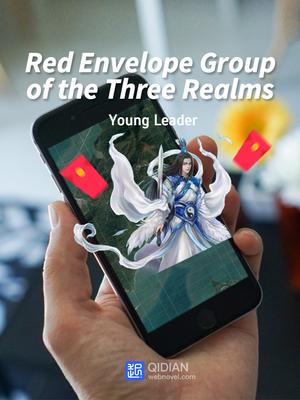
Red Envelope Group of the Three Realms
Chapter 1986 September 1, 2023 -
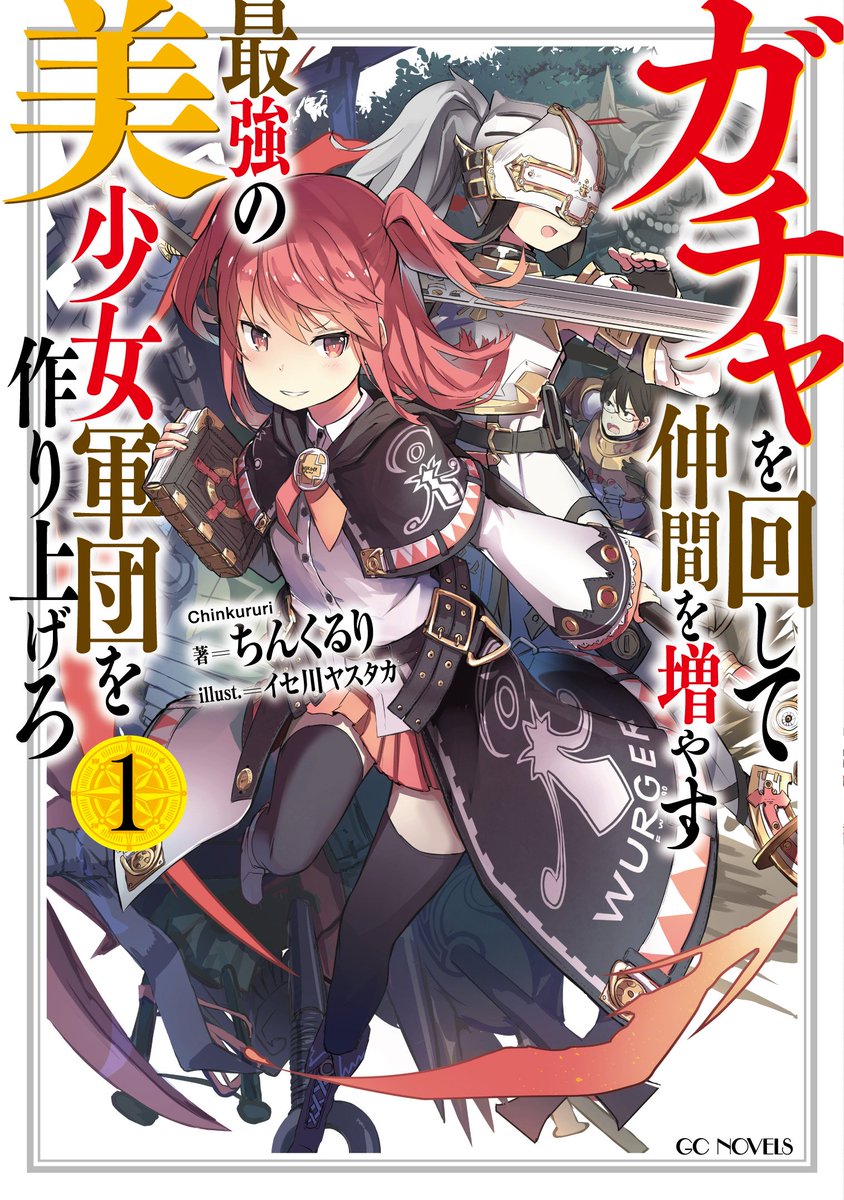
Using Gacha to Increase My Companions and to Create the Strongest Girls’ Army Corps
Chapter 84 August 28, 2023 -
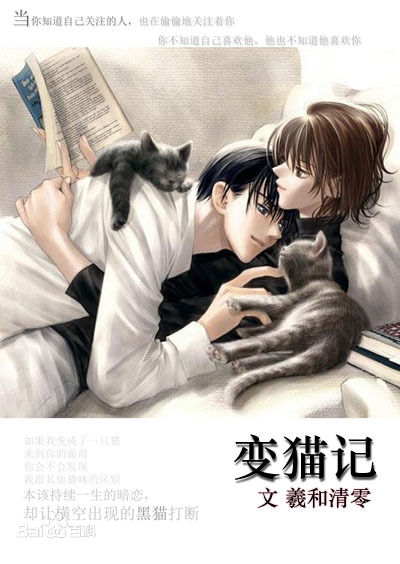
The Cat Transformation
Chapter 27 August 26, 2023 -
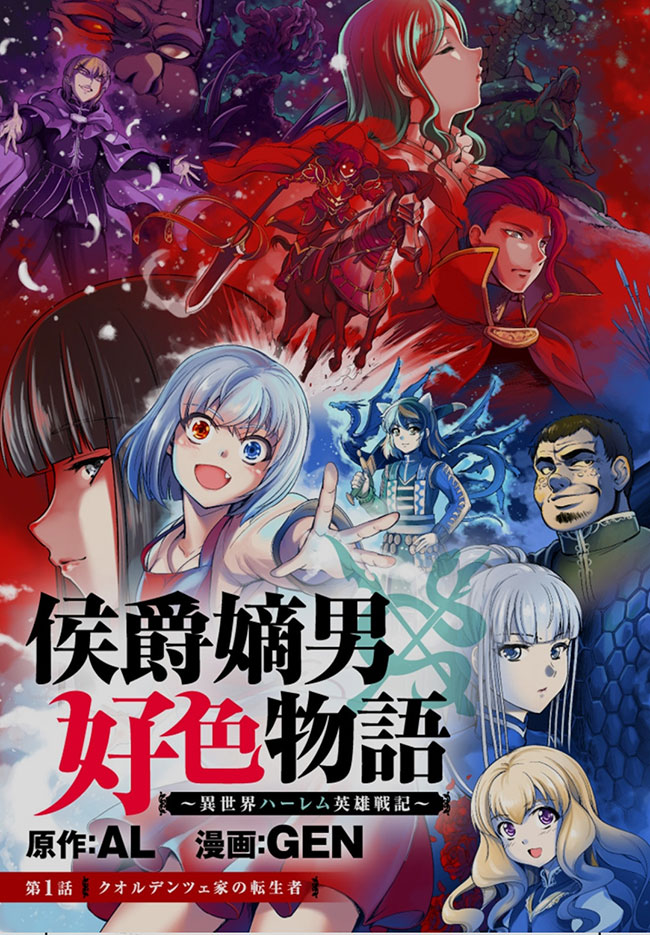
The Marquis’ Eldest Son’s Lascivious Story
Chapter 232 August 26, 2023 -
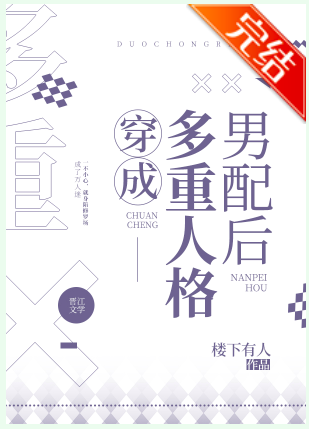
After Dressing as a Male Lead with Multiple Personalities
Chapter 14 August 11, 2023 -
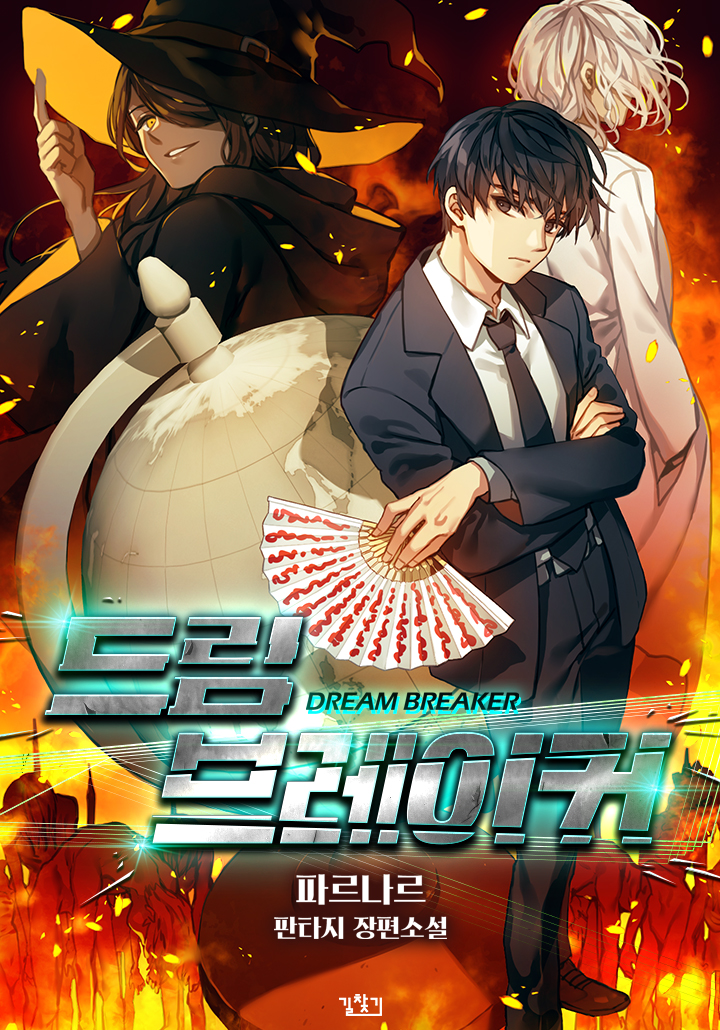
Dream Breaker
Chapter 33 August 8, 2023 -
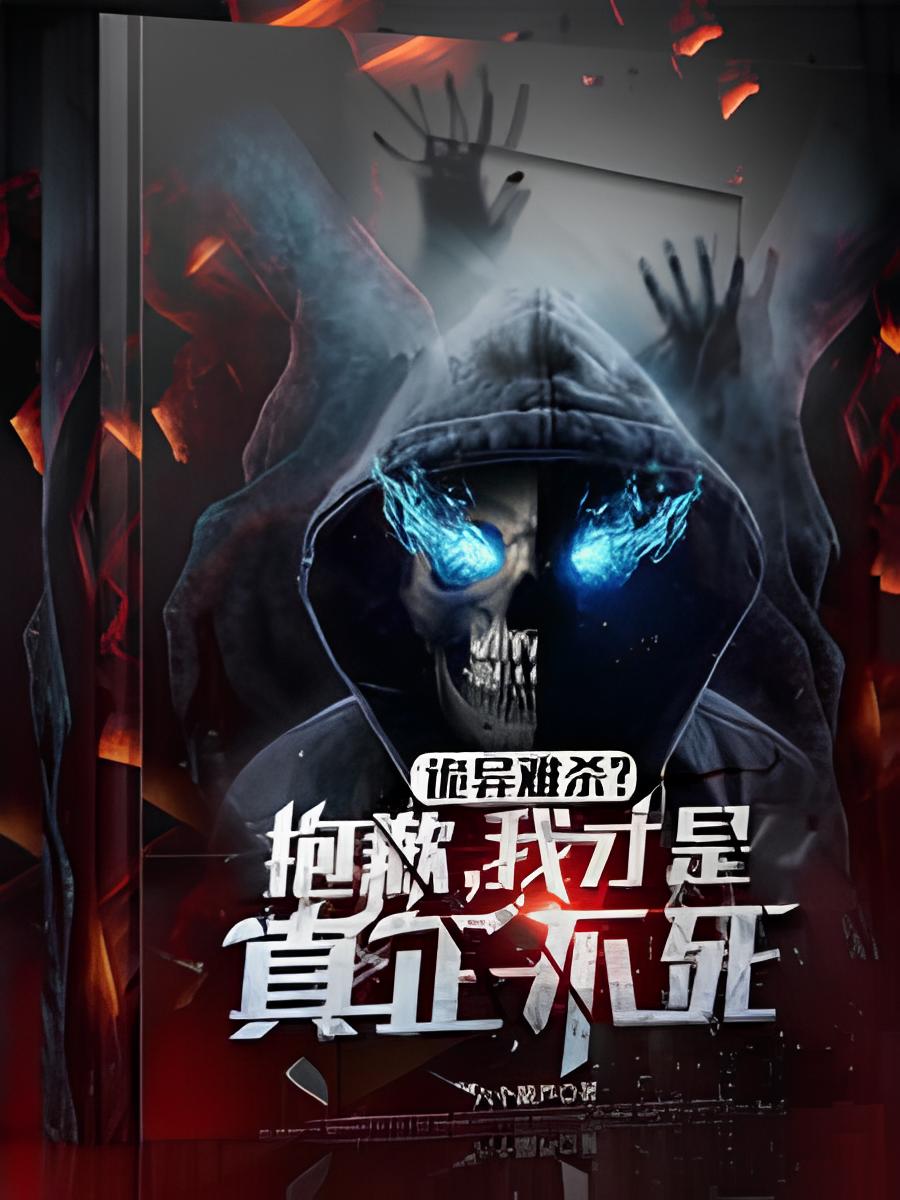
Die, Replay, Repeat
Chapter 2 August 8, 2023 -
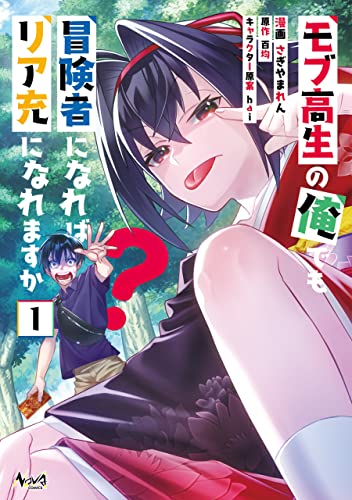
Can Even a Mob Highschooler Like Me be a Normie if I Become an Adventurer?
Chapter 24 August 7, 2023 -
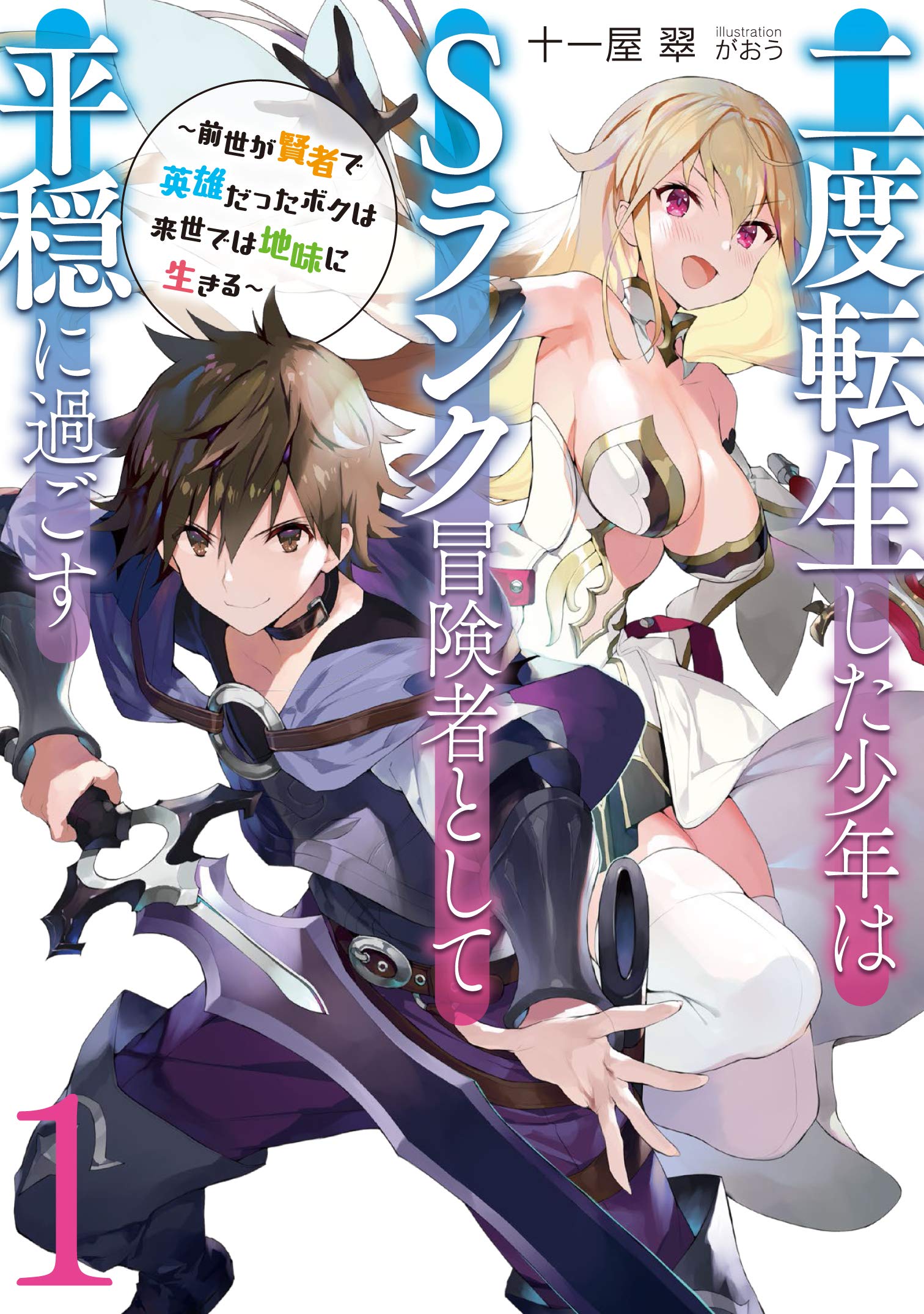
Nido Tensei Shita Shounen wa S-rank Boukensha Toshite Heion ni Sugosu ~ Zense ga Kenja de Eiyūdatta Boku wa Raisede wa Jimi ni Ikiru ~
Chapter 90 August 7, 2023 -
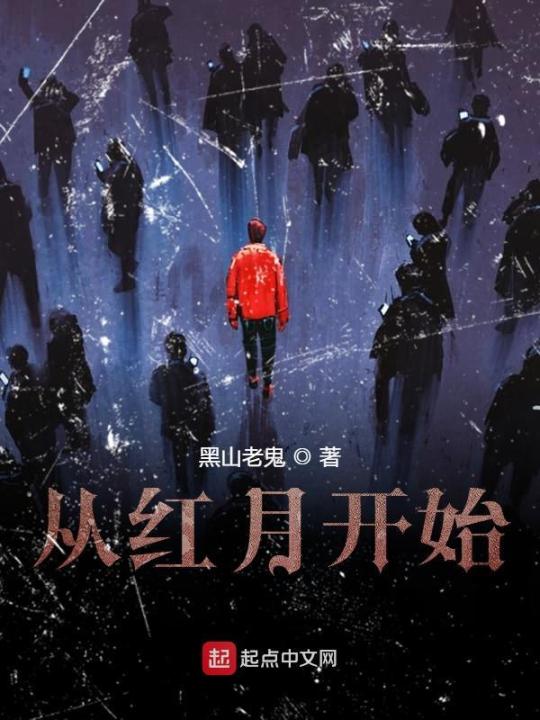
Since The Red Moon Appeared
Chapter 19 August 3, 2023 -
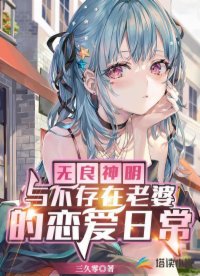
The Daily Love Life Of The Immoral God And His Invisible Wife
Chapter 111 August 2, 2023 -
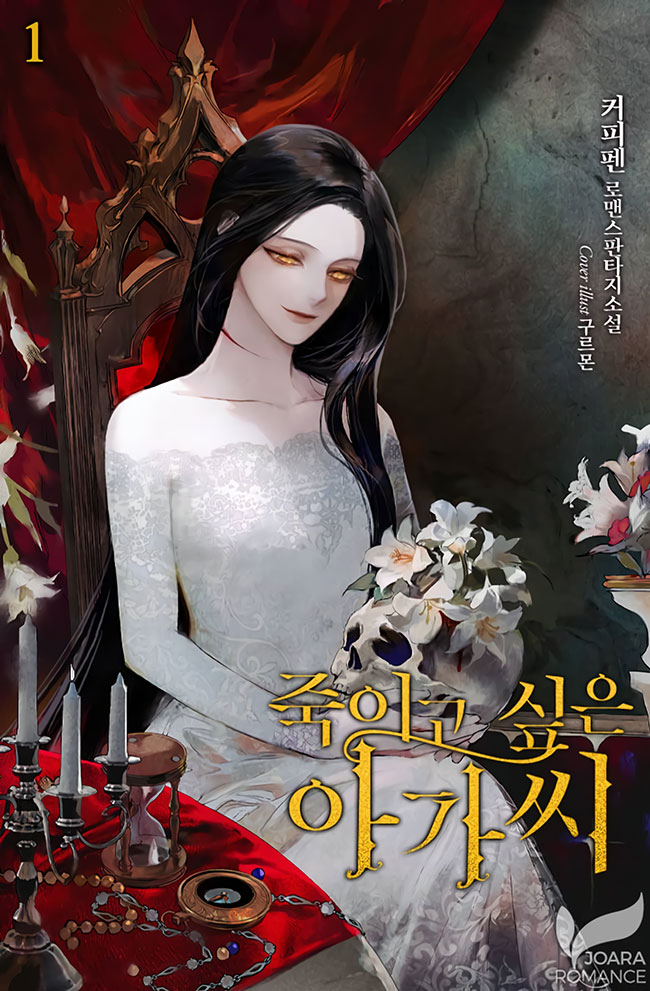
The Lady You Want to Kill
Chapter 18 August 1, 2023
